This week's case discussion, submitted by Dr David Stewart, focuses more on management than on...
.jpg?height=200&name=Case%20(11).jpg)
Advance your knowledge of how to conduct a thorough skin assessment with dermoscopy. Designed for Registered Nurses, Nurse Practitioners, and allied health professionals working in specialist skin clinics.
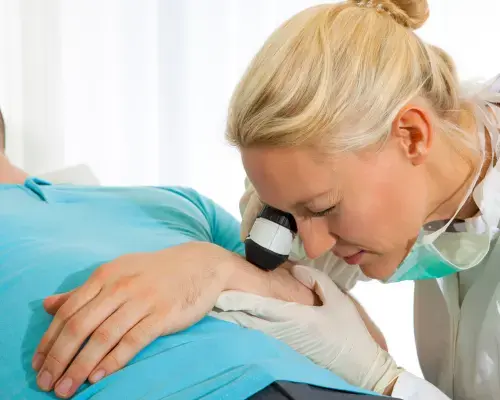
Gain a comprehensive understanding of how to conduct a thorough skin assessment with dermoscopy, and learn how to identify a broad range of suspicious skin lesions across all patient age groups and skin types.
- Develop the skills to play a vital role in the early detection and management of melanoma, thereby helping to improve patient outcomes by ensuring timely intervention and comprehensive care.
- Ideal intermediary course for nurses and allied health professionals seeking knowledge in lesion screening.
- Presented by world-leading experts in dermoscopy.
- Reviewed by the International Dermoscopy Society, and Registered Nurses have provided documentation on Scope of Practice for nurses to facilitate their CPD in this field.
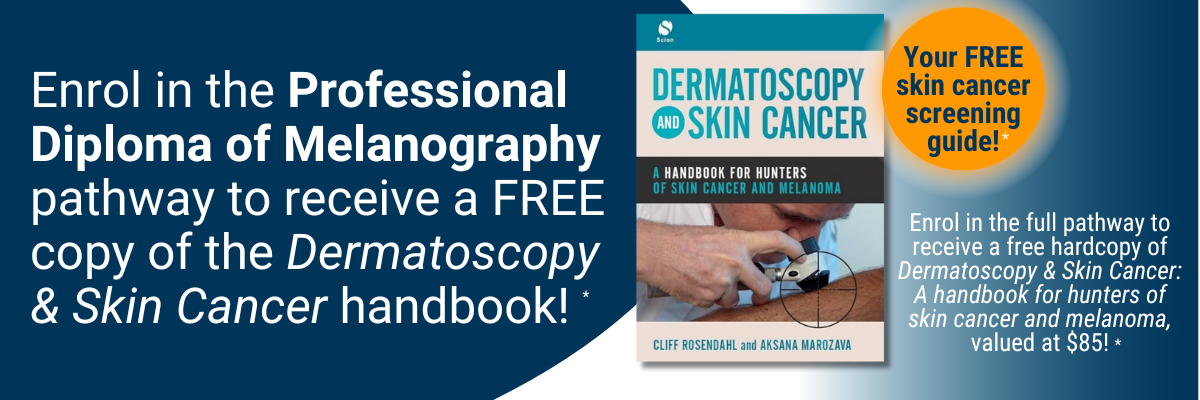
* T&Cs apply: Stocks are limited; offer only available while stocks last and only available to those who enrol in, and pay for, the full three-stage Melanography pathway bundle. Books posted within Australia only; you must have a valid Australian postal address to receive the book. The book will be automatically mailed to you upon successful enrolment.
- Accurately screen the most common skin lesions (including melanomas, non-melanoma skin cancers, keratinocyte skin cancers, and melanocytic naevi) for referral to a doctor for diagnosis and treatment.
- Confidently identify difficult benign lesions.
- Learn to assess commonly encountered skin malignancies in all different skin types.
- Assess lesions in patients at every stage of the life cycle, from children to young adults and the elderly.
- Provide faster diagnoses and early intervention for your patients, and help save lives.
Get unlimited access to all course content, additional learning materials, ongoing post-course support, and more.
What is a melanographer?
A melanographer is a nurse or health professional whose primary role is to conduct skin assessments and identify suspicious skin lesions for referral to a doctor.
1. Skin assessments and diagnostic procedures: Melanographers are skilled in conducting comprehensive skin assessments to identify suspicious lesions that may indicate skin cancer, using a combination of tools including a dermatoscope and taking images. Melanographers may assist doctors during diagnostic procedures like biopsies.
2. Patient education: Melanographers educate patients about skin cancer prevention and early detection, sun protection, self-examination, and skin checks.
3. A multidisciplinary approach: Melanographers work within a multidisciplinary team which may include GPs, dermatologists, oncologists and other healthcare professionals involved in caring for skin cancer patients.
This module discusses the use of dermoscopy in diagnosing, managing, and monitoring treatments of non-melanoma skin cancers. It simplified and grouped the various criteria of BCC into four main categories: pigmented structures, vessels, ulceration, and translucency. Dermoscopic images are used throughout the presentation to discuss the categories in detail. The module also discusses management options when dealing with BCC and factors affecting the management choice. The module concludes with a discussion on how to manage and treat different SCCs.
This module focusses on the classification of melanocytic naevi based on dermoscopy pattern, morphology, colour, and pigmentation distribution. The module outlines dermoscopic features of congenital nevi and acquired nevi. Dermoscopic images are used throughout the presentation to discuss the different classifications of congenital nevus and appropriate action to manage them.
This module describes the dermoscopic features that are commonly seen in melanoma. It focusses on the patterns and structures encountered in melanoma. Most melanomas will reveal at least one of ten melanoma- specific structures. Throughout this module, each of these ten melanoma-specific structures are discussed in detail including numerous dermoscopic images to demonstrate learning. Various dermoscopic tools are discussed. Eight management rules to assist with the detection of melanoma are outlined.
This module discusses the broad spectrum of BCC and keratinocyte skin cancer such as actinic keratosis, Bowen’s disease, intraepithelial carcinoma as well as keratoacanthoma and invasive SCC. The module explains the dermoscopic clues, clichés and common pitfalls whilst diagnosing a BCC. It also talks about the rare and important subtypes of BCC. Extensive images and examples are provided to identify the different types of skin cancer.
This module discusses the use of dermoscopic clues and features in diagnosing benign lesions that are often challenging to recognise. The module explains these clues and features in detail including imaging, to improve the recognition of melanocytic and non-melanocytic benign tumours that might stimulate melanoma. The module also outlines the four main simulator scenarios; melanoma-like nevi, melanoma-like seborrheic keratosis, spitzoid-looking lesions, and nevi with special features.
This module introduces the epidemiology of neavi and melanoma in children. The module discusses the appropriate steps to take when conducting skin screening on young children. It then discusses the difference in pre-pubertal and post-pubertal children, in terms of total nevus count, type of nevi and melanoma risk. Dermoscopic images are used throughout the presentation to discuss the different melanocytic lesions found in children. The module also outlines the dermoscopic clues and patterns to assist in diagnosing problematic lesions in children.
This module focuses on the diagnostic strategies to use when screening young adults - individuals after puberty up to the age of fifty. It outlines effective screening techniques to determine whether to excise skin lesions in young adults. Dermoscopic images are used throughout the presentation to explain the different characteristics of lesions seen at birth, through to young adults and to elderly individuals. The module also explains the different morphologic types of nevi and tumours commonly found in young adults and how to manage identify and manage suspicious skin lesions.
This module focuses on identifying the problematic lesions commonly found in elderly patients - individuals aged sixty or older. It discusses the correct steps to take when screening elderly patients with pigmented and non-pigmented skin lesions, including melanocytic and non-melanocytic neoplasms. The module explains the use of specific dermoscopic clues and patterns including imaging, to diagnose melanoma in its early stages whilst recognising the myriad of benign lesions.
This module focuses on identifying lesions in different skin types including fair or dark and sun-damaged skin. It covers an overview of factors that influence the morphology of skin tumours and then discusses the skin-type related nevus patterns and clues to consider for diagnosis. The module also discusses the skin-type related pattern of epithelial skin malignancies, the age-related frequencies of skin tumours, and finally, the differential diagnosis of flat, pigmented macules on sun-damaged facial skin. Dermoscopic images are presented throughout the module to assist with the above discussion.

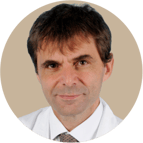
Professor at the Department of Dermatology, Medical University of Vienna, Austria
Professor Harald Kittler has a special clinical interest in dermoscopy of pigmented skin lesions. His main research interest is digital dermoscopy, follow-up of pigmented skin lesions, and computer assisted digital dermoscopy. Harald has been working for 10 years in the field of dermoscopy and has published a number of scientific articles especially in the field of digital dermoscopy and dermoscopic follow-up of melanocytic nevi.

Attending Physician, Dermatology Service, Memorial Sloan Kettering Skin Cancer Center, New York, USA
Professor Ashfaq A. Marghoob is a board-certified dermatologist specialising in the diagnosis and treatment of cancers of the skin. He is the director of Memorial Sloan Kettering’s regional skin cancer clinic in Long Island and consults and treats patients in the centre’s outpatient facility in Manhattan.
Although providing the best care possible for his patients remains his primary goal, Ashfaq also remains committed to education and clinical research, with the hope of educating physicians and the public about the importance of early skin cancer detection to save lives.
He is active in clinical research and has published numerous papers on topics related to skin cancer with an emphasis on melanoma, atypical/dysplastic nevi, and congenital melanocytic nevi. Ashfaq’s research interests are focused on the use of imaging instruments such as photography, dermoscopy, and confocal laser microscopy to recognise skin cancer early in its development.

Dermatologist-Venereologist, First Department Of Dermatology, Aristotle University, Greece
President, International Dermoscopy Society
Aimilios Lallas is an Associate Professor of Dermatology at the First Department of Dermatology of Aristotle University in Thessaloniki, Greece. He is specialised in skin cancer diagnosis with non-invasive techniques, as well as in the management of skin cancer patients.
His main field of research interest is dermoscopy of skin tumours, the application of the method in general dermatology and the improvement of the management of oncologic patients. He is an author of more than 330 scientific papers published on Pubmed Central, most of them on dermoscopy and skin cancer. He is an editor of eight books and author of several book chapters on dermoscopy. He is a co-investigator in several Phase III Clinical trials on skin cancer treatment. He has been awarded several scholarships and scientific awards.
Over the last years, A/Prof Lallas has established scientific collaboration with numerous colleagues from several countries and has supervised the training of numerous fellows from different countries. He is an invited speaker in several domestic and international congresses and meetings, mainly on dermoscopy and on skin cancer diagnosis and management. He is particularly involved in teaching activities on dermoscopy, having organised and participated in numerous domestic and international courses.
A/Prof Lallas is currently the President of the International Dermoscopy Society.


Head of the Dermatology Clinic of the University of Trieste, Italy
Associate Professor Iris Zalaudek is a board-certified dermatologist and Head of the Dermatology Clinic of the University of Trieste, Italy. Since 2016, she has been President of the International Dermoscopy Society, and was previously the Research Director of the Non-Melanoma Skin Cancer Unit at the Medical University of Graz, Austria.
Her main research fields are related to dermato-oncology and include non-invasive skin imaging techniques, as well as topical and systemic treatment of skin cancer. Moreover, she is engaged in the development of modern teaching methods such as online distant courses and tele-dermatologic services. She is Director of the Master of Science program entitled "Dermoscopy and Preventive Dermato-Oncology" of the Medical University of Graz, Austria.
Iris has published more than 450 articles, of which 358 (267 full papers) have been cited in PubMed. Her combined publications have received an impact factor of 1003 and a h-index value of 36 (by April 2017). In 2003 her work was awarded by the Hans-Weitgasser Price from the Styrian Association of Dermatologists and in 2008 she was awarded the Best Researcher of the Medical University of Graz, Austria.

Dermatologist, Santa Maria Nuova Hospital, Reggio Emilia, Italy
Dr Elvira Moscarella is a dermatologist at the Santa Maria Nuova Hospital in Reggio Emilia, Italy. She acquired her medical degree in 2005 at the Second University of Naples before completing her residency in dermatology and venereology at the University’s Department of Dermatology. In 2008, Elvira undertook further education in dermoscopy and confocal microscopy. She is a member of the European Academy of Dermatology and Venereology and the International Dermoscopy Society, and is Editor in Chief of the latter’s newsletter and case of the month. Elvira’s main interests are in dermoscopy and reflectance confocal microscopy, and their use in skin cancer medicine.

$1495
.
Bundle two courses and save 5%, or three courses and save 10% upon enrolment.
Talk to us about deferred payment options, registrar scholarships and special rates.

An excellent course introduction to dermoscopy and relating what you see to the histopathology and applying this in clinical practice. Great lectures and supporting materials.
S. Jan
Excellent! This is a great course that has helped me diagnose many more subtle, early skin cancers especially melanoma in situ. The course was clearly presented, with good pictures and course book. All HealthCert's skin cancer courses have been hugely valuable to my practice!
R. Mundell
I highly recommend this course. I increased my knowledge and developed confidence in using dermoscopy and in diagnosing melanoma and other skin lesions. Every skin lesion I see means so much more now that it has a name. Great involvement from various skin cancer experts and great videos and reference materials.
P. Ishri
I would recommend this course as an important addition to self-directed learning in dermatoscopy. It was a invaluable course to gain the diagnostic tools, knowledge and confidence in managing skin cancer. The course was professionally conducted with excellent presentations.
L. Suntesic
I really enjoyed the level of learning. It is very rewarding to know that I am potentially saving lives. Recently I volunteered with the Lions Cancer Institute for two days, and we screened 158 patients, detected 38 possible melanomas and 83 keratinocyte skin cancers. It was a very successful and rewarding two days, and something I could do confidently because of my learning from this course.
K. Laverty
| RACGP Activity Number | ACRRM Activity Number | Activity Title | Education Hours | Performance Hours | Outcome Hours | ||
|---|---|---|---|---|---|---|---|
| 403783 | 28433 | Acral lesions | 403783 | 28433 | 3.5 | 6 | 0 |
| 403786 | 28434 | Melanoma | 403786 | 28434 | 4.5 | 6 | 0 |
| 403766 | 28428 | The Chaos and Clues method | 403766 | 28428 | 4.5 | 6 | 0 |
| 403764 | 28427 | Algorithms and the elephant approach | 403764 | 28427 | 4 | 6 | 0 |
| 403772 | 28430 | Malignant non-melanocytic lesions commonly seen in the practice | 403772 | 28430 | 4 | 6.5 | 0 |
| 403778 | 28432 | Facial lesions | 403778 | 28432 | 4.5 | 6.5 | 0 |
| 403769 | 28429 | Benign non-melanocytic lesions commonly seen in the practice | 403769 | 28429 | 3.5 | 5.5 | 0 |
| 403775 | 28431 | Melanocytic nevi | 403775 | 28431 | 4 | 5.5 | 0 |
| 800429 | 32973 | Acral Lesions Outcome Improvement Activity | 800429 | 32973 | 0 | 0 | 8.5 |
| Total hours | 32.5 | 48 | 8.5 | ||||
The purpose of outcome measurement activities is to improve your clinical confidence in managing an identified learning gap. Outcome measurement activities are not a requirement of our Professional Certificate of Advanced Certificate courses; they are a requirement for Australian CPD purposes.
HealthCert Education provides a variety of outcome measurements activities to suit your needs:
HealthCert Education offers courses suitable for allied health professionals and all nurses, including Enrolled Nurses, Registered Nurses, and Nurse Practitioners. Please read the course description carefully to select a course that is right for your nursing role.
The Advanced Certificate of Melanography is suitable for allied health professionals, Registered Nurses, and Nurse Practitioners who work in specialist skin clinics and who are interested in primary care dermoscopy for the screening of skin conditions commonly seen in day-to-day primary care.
Participants must have successfully completed the HealthCert Professional Certificate of Melanography (or a qualification deemed equivalent).
Participants do not have to pass an IELTS test but, as the courses are delivered in English, proficiency in listening, reading and writing English is assumed.
Participants will require access to a computer/laptop, an internet connection and a basic level of technology proficiency to access and navigate the online learning portal.
Professionally recognised qualifications and prior studies may be recognised for entry into this course if the learning outcomes match exactly. Please ask a HealthCert Education Advisor for an individual assessment of your prior qualifications and experience.
Upon successful completion of this course, you will receive the Advanced Certificate of Melanography in recognition of your skills.
This certificate course:
Professional Diploma pathway
This course is the second stage of the three-part professional diploma pathway. The full pathway is Professional Certificate of Melanography, Advanced Certificate of Melanography, and Professional Diploma of Melanography.
Clinical trials for melanography
There are many clinical trials in Australia and overseas relating to skin cancer. To follow or join a clinical trial in Australia, please search here for the condition.
HealthCert Education is an RACGP-accredited CPD provider under the RACGP CPD Program.
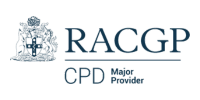
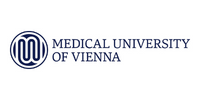
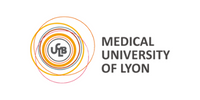


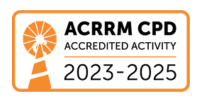
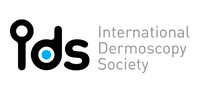

Don't see your question? Explore other faqs or talk to us.
Melanographers are an important part of the medical team in a primary care skin cancer practice, and their work identifies skin cancer and saves lives.
It is the role of the melanographer to identify any suspicious lesions and report these findings to the doctor. It is then the responsibility of the doctor to diagnose and manage the patient’s condition in accordance with evidence-based practice. Melanographers work under the supervision of doctors such as dermatologists or general practitioners specialising in skin cancer. They play a crucial role in melanoma detection through skin assessments, dermoscopy and patient education. However, their scope of practice does not include making independent diagnoses or prescribing treatments.
It is essential that nurse melanographers have specialised training in dermatology and melanoma detection. This includes: i) formal education, ii) continuing education courses, and iii) clinical training. They are required to stay up to date with all current guidelines, best practices and advances in melanoma detection.
Payments can be made upfront or in monthly instalments. Special rates and various payment options are available, including discounts for course bundles. Talk to us to learn more.
Completion of any HealthCert course or attendance at an event will enable you to access the HealthCert Alumni Program which includes:
HealthCert Education is pleased to issue digital credentials for alumni. Digital credentials are a permanent online record of your successful completion of a HealthCert course and are issued to all course participants in addition to PDF certificates. If you are based in Australia, you also have the option to order a hard copy of your digital certificate for a small additional fee.
The study duration of this certificate course is 89.5 hours, plus online assessment and private study. This self-paced course offers the flexibility of 100% online study in your own time, at your own pace, in your own home or office, with no mandatory face-to-face requirements. You are not required to be online at specific times but can view and replay video lectures at your convenience.
All HealthCert courses meet World Federation of Medical Education standards. If you live or work outside of Australia, please contact us at admin@healthcert.com to discuss whether this course can be recognised in your country.
Want to stay up-to-date with the latest case studies, podcasts, free video tutorials and medical research articles pertinent to primary care?
Our Education Advisors can assist you with any queries and tailor our education pathway to suit your current expertise, interests and career goals.